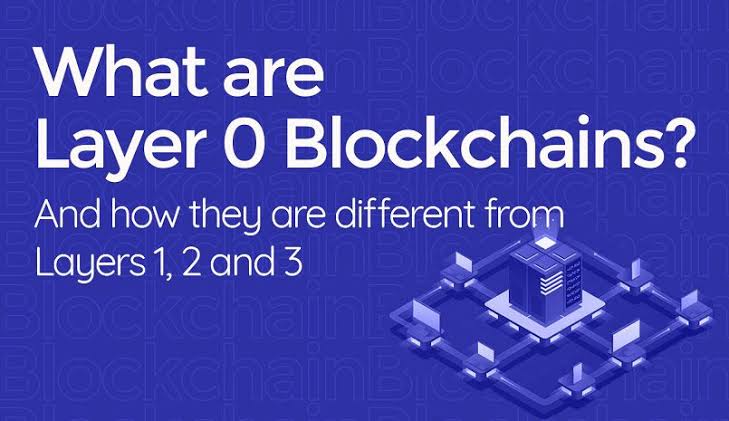There is a lot to learn and comprehend about the broad realm of Web3 and blockchain technology. Knowing blockchain layer 0 is essential to the fundamentals of blockchain networks, regardless of the cryptocurrency space and the industry’s efforts to transform financial customs.
The phrase “layer” is frequently mentioned by people in the blockchain space, but knowing the underlying infrastructure offered by Layer 0 is critical to overall blockchain expertise. Exploring that fundamental architecture in detail, yields a wealth of information about how the technology functions.
What is Layer-0 Blockchain?
Layer-0 blockchain is a novel idea that serves as a basis for the development of blockchain networks. Another name for it is a “network of networks.” To get beyond current obstacles and constraints, layer-0 blockchain concentrates on developing a sufficient underlying infrastructure for blockchain networks, opposing the standard blockchains that build on top of one another (layer-1, layer-2, etc.).
How does Layer-0 Blockchain work?
Layer 0 is made up of many parts that cooperate to make the blockchain network more effective. The Consensus Layer is the initial part responsible- for generating new blocks and validating transactions. The networking layer, which makes up the second part, is in charge of ensuring that every node in the network is linked and able to communicate with one another. The third element is the Virtual Machine Layer, which gives smart contracts a safe and effective operating environment.
The modular design of layer-0 solutions is a fundamental characteristic. It keeps the blockchain network’s basic architecture unaffected while enabling developers to modify and add new features. Furthermore, layer-0 blockchain has been engineered to be incredibly scalable, allowing it to process many transactions per second.
Exciting Features of Layer 0 Blockchains
Layer 0 blockchains offer the fundamental levels of interoperability, scalability, and security that underpin the power and transformational potential of blockchain technology. Let’s take a deeper look at some of these fundamentals:
Scalability:
Scalability has always been a vital problem for early blockchain technologies like Ethereum and Bitcoin. These networks get overloaded as transaction volumes rise, leading to congestion and expensive fees. Delivering innovative scaling solutions blockchain layer 0 seeks to resolve this problem. For example, sharding—a technology that divides the network into smaller, more manageable pieces—allows transactions to be processed in parallel, boosting throughput.
Another solution is DAG-based networks which are built to be more flexible and scalable than traditional blockchain networks, meaning they can handle larger amounts of data in shorter times.
Interoperability:
Additionally, Layer 0 permits improved blockchain network interoperability. Blockchains’ inability to easily exchange data and interact has historically been caused by their silos. The interchange of data and assets between different blockchain platforms is made more comfortable by Layer 0 protocols like interoperability frameworks and cross-chain bridges. Decentralised finance (DeFi), supply chain management, and cross-chain applications are all made possible by this interoperability, which promotes global cooperation and innovation.
Security:
Layer 0 blockchains have robust encryption and cryptographic procedures, to safeguard the chain’s data integrity. It makes them incredibly secure. In sensitive applications like finance, where data security is essential, grade A security is must. .
Consensus mechanisms:
For blockchain networks to remain secure and intact, Layer 0 is essential. The trustless environment created by Layer 0 protocols allows users to transact and communicate without depending on a central authority by creating consensus mechanisms. Consensus techniques, such as delegated proof-of-stake (DPoS) and proof-of-stake (PoS), use the financial incentives of network users to safeguard the blockchain and thwart fraudulent activity. Newer consensus mechanisms like Proof Of Reputable Observation (PRO) is fault-tolerant and achieves a reputation-based consensus using automated federation. Validators receive coin rewards as an incentive for honest participation and validation of data.
Decentralization:
Layer 0 blockchains are generally non-centralized, which means that no one party or group is in charge of them. Because of this characteristic, they are impervious to manipulation and censorship, increasing system transparency and confidence.
Flexibility:
Layer 0 blockchains are incredibly adaptable and may be tailored to meet certain use cases. Building upon the foundation, developers may design systems and apps that are customised to match the demands of their consumers.
Improved Performance and Speed:
Layer 0 blockchains optimise data storage and consensus procedures by leveraging technologies like Directed Acyclic Graph. Compared to conventional blockchain platforms, this boosts transaction throughput, allowing for quicker and more effective transaction processing.
Reduced Prices:
Layer 0 blockchains’ enhanced performance and scalability result in lower transaction fees and other costs related to blockchain networks. This lower cost encourages broader adoption by making blockchain-based solutions more affordable for consumers and enterprises.
What Does Layer-0 Protocol Future Look Like?
By facilitating the development of several specialised Layer-1 blockchains that effortlessly communicate with one another, Layer-0 protocols have the potential to spark a new wave of blockchain innovation in the years to come. Although Layer-0 presents several technological and adoption hurdles, it has the potential to establish the groundwork for a blockchain ecosystem that is more transparent, efficient, and modular.





























